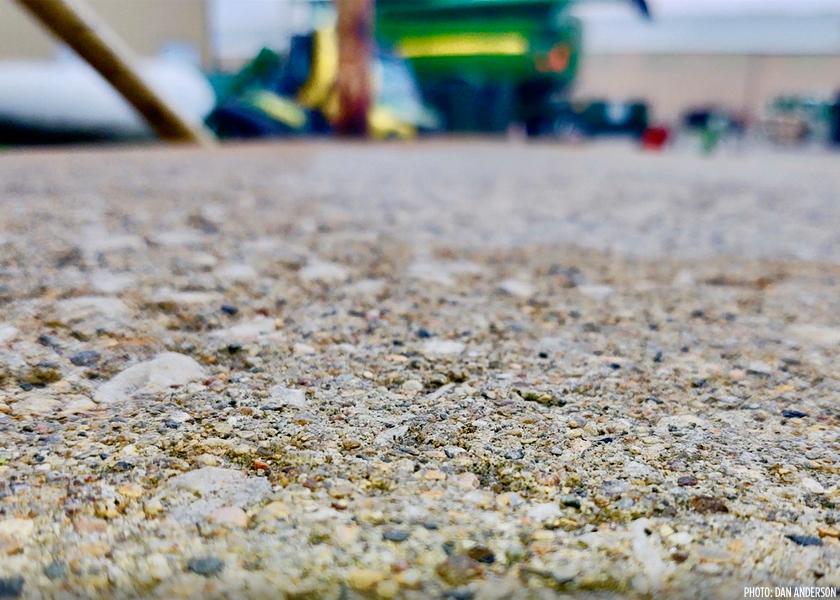4 Tips for Concrete That Lasts

Many farmers do their own concrete work. Here are tips from pros to improve the quality of the finished slab:
Fiber-strand reinforcing, which means fiberglass or other fibers are mixed with the concrete at the plant, provides excellent control of thermal and stress cracking. Unlike re-rod or wire mesh added during a pour, fiber-strand reinforcing is uniform throughout the slab.
“For thermal movement and expansion control, fiber reinforcing is as good as metal reinforcing, and you don’t have to mess with making sure it’s positioned in the middle of the slab during the pour,” says Alan Sparkman, executive director with the Tennessee Concrete Association.
Don’t overwork concrete. “Pour it, screed it once or twice with a bull float to level it, then leave it alone,” Sparkman says. “Depending on temperature and other factors, bleed water will come to the surface. After a while, that bleed water will disappear, and then you’re ready for a final finish. If you work it before that bleed water goes away on its own, you’ll create a cap that traps that bleed water in the slab, and you can have problems with the finished surface scaling off sometime down the road.”
Don’t overwork exterior slabs. “If you overwork an exterior slab, you get too much cement and not enough aggregate in the top layer,” Sparkman says.
He recommends simply broom-finishing the bull-floated surface after the bleed water disappears but says a single pass with a wood or magnesium float between bull-floating and brooming produces a slightly smoother surface.
Use a concrete saw to cut fresh concrete one-half the depth of the slab. Space cuts according to the formula: the thickness of the slab in inches multiplied by three. For instance, a 4-inch slab would traditionally be jointed every 12 feet, though many concrete contractors now multiply by 2.5 to get a joint spacing of 10 feet.
Sparkman encourages farmers to work with local concrete plants when preparing to work with concrete.
“We deal with concrete every day and know tricks and tips to get the best slab possible that won’t have problems with cracking or spalling down the road.”







